Home-Defense Gun (How and What to Choose)
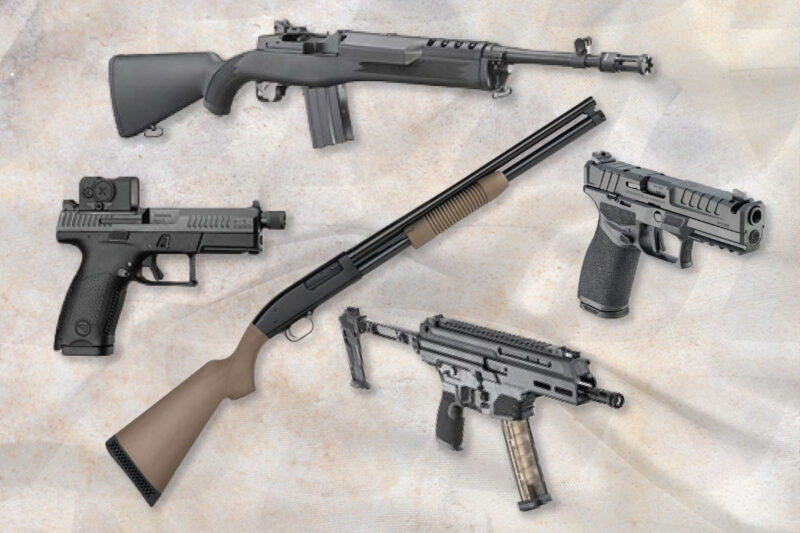
If someone breaks into your home, you want to be prepared. This includes a plan to keep the family safe. That plan should include a predetermined safe location and a way to get everyone to that location.
Each plan is different, depending on the needs and layout of the home. Every plan, however, should also include a way to fight back if needed, i.e. a home-defense gun. Of course, picking the best home-defense gun for your needs requires more than just getting the best deal.
Home-Defense Gun Considerations
Any firearm is better than none, but it is best to choose one based around skill and needs. Some of those needs might not be easily recognizable. To start, a home-defense gun needs to be easily handleable by every person in the family that might use it. It also needs to be safely storable. Only family members with knowledge and training should have access. This doesn’t automatically mean a safe, but some sort of safe storage.
Other considerations include users needing to be able to see and hit targets. This is basically a way of saying that a home-defense gun needs easy-to-use sights and maybe a way to see in the dark, i.e. gun light.
Sighting systems can be optics—red dots work well for close quarters— or highly visible iron sights. It is a good idea to use sights that shine in the dark, such as tritium or fiber optics. For the same reason, attacks often happen under the cover of darkness, home-defense guns could use illumination, which means some sort of attachment rail, because duct taping a flashing to a gun is not a good option. Of course, not all home-defense guns come with attachment rails, particularly the more affordable options.
Finally, folks need to think about lines of fire and pass through. Homes typically contain families, and often have neighboring houses. This is why families need a plan that includes designated locations for defense and retreat. It is also why defenders need to understand where shots might end up after firing, whether using a shotgun, rifle, PCC or a handgun. Regardless of what make and model is chosen, the most important factor of any gun is reliability.
Scatter Them Guns
Ole Joe was right when he claimed shotguns made great home-defense guns. Unfortunately for him, there is a bit more to it that blasting off warning shots into the air. They might have used to be called “street sweepers,” but you still can’t just point and clear a room.
Shotguns have to be aimed. It is particularly important inside a home, because errant shots can pass through walls and windows, especially if buckshot or slugs are used. There are few things more intimidating, though, than staring down the bore of a shotgun. Now, you can stop a break-in with granddad’s old double barrel but it might be better pick up a shotgun designed around defense.
Mossberg Maverick 88

The Mossberg Maverick 88 is a simple and affordable pump shotgun with a few available models. This includes all purpose, slug and security; there is even a 20-gauge all-purpose shotgun. The three security models come in only 12 gauge.
The Maverick doesn’t come with bell and whistles, such as combat sights or even rails. It does, however, come with dual extractors, steel-to-steel lockup, twin action bars and an anti-jam elevator. This pump gun is a reliable workhorse that sells for less than $300. Even better, it is compatible with Mossberg 500 accessories, meaning it can be upgraded when more money becomes available to owners.
TriStar Raptor ATAC

Those looking for a few more options without reaching a grand in price, should look at the TriStar Raptor ATAC. This gas-operated semi-auto shotgun comes in 12 gauge and features a fiber-optic bridge front sight and a ghost ring rear sight mounted on a Picatinny rail. It also has swivel studs for a sling, chrome-line chamber and barrel, five-round magazine and a magazine cut off for unloading the chamber only. It even fits Benelli/Beretta chokes. And this pistol-grip shotgun provides all this for just over $500.
The ATAC might not be the most expensive, but it still provides smooth cycling and reliability. Even better, the pistol grip provides control, while the sights offer excellent aiming capabilities. The TriStar Raptor ATAC offers good value for the money, particularly to those seeking a tactical-style shotgun. It might be limited, though, on accessory upgrades.
Benelli M4 Tactical

Long before John Wick chose it for a mission, the Benelli M4 was considered one of the best combat shotguns available. It is, in fact, the U.S. military’s official shotgun, listed as the M1014 Joint Service Shotgun. This shotgun has been field tested in all manner of environments, and it still leads the pack.
Featuring Benelli’s ARGO (auto-regulating gas-operated) operation system, the M4 comes set up for home defense with ghost-ring sights, drilled and tapped receiver that includes a Picatinny rail, and a whole lot of models from which to choose. Shooters can even opt for pistol or regular grip, and upgrade to hold two additional rounds over the standard six. This semi-auto shotgun is a beast that many consider the pinnacle of a home-defense shotgun.
Precision Instruments
Some might consider rifles to be a bit long for house clearing but they also provide stability for putting rounds on target. Those with adjustable stocks make fitting family members easy. Many rifles even come with rails for accessories and attachments that make them better as a home-defense gun.
AR-15 Carbine

One of the most customizable firearms available is the AR-15. What’s even better, there are countless makes and models available, from inexpensive base rifles to near customized rifles that run $2,000 or more. One of the best budget rifles include the PSA PA-15, which can be had for less than $500. On the other end Daniel Defense makes one of the best ARs money can buy. There are even numerous AR-15 rifles in between to match any budget, such the IWI Zion-15 and the Smith & Wesson M&P15.
It doesn’t really matter which AR-15 type rifle users choose, as long as it comes with the desired features and reliability. What’s is really nice about most of them is that these rifles can be upgraded and accessorized for any use. In fact, tricking one of these rifles out with a light, optic, laser, back-up sights and even a suppressor is part of its appeal.
Ruger Mini 14

Some folks just don’t like ARs, but still want a tactical rifle as a home-defense gun. So, another option to consider is the Ruger Mini 14. Introduced in 1973, the Mini 14 has received a few upgrades from the original. These upgrades made it look a little more modern and greatly improved the accuracy. This semi-auto rifle isn’t light, but it is short enough for close quarters.
The Mini 14 uses a Garand-style action with breech bolt locking system. This fixed-piston gas system uses a self-cleaning moving gas cylinder that provides unparalleled reliability under all operating conditions. For aiming, it comes with a ghost ring rear aperture sight and a non-glare, protected blade front sight. However, it also comes with a drilled and tapped receiver for mounting an included Picatinny rail. It even has Integral scope mounts, machined directly on the solid steel receiver for secure mounting of an optic.
The Mini 14 is different from an AR, which is its appeal to many. However, it also a fairly customizable rifle that works as a home-defense gun. It is also made in America by an American company, Ruger.
Marlin Dark Series Lever Action

Lever actions were the first fast-shooting fighting rifle. In fact, these guns held that title for quite a while with both the military and civilians. For all that time, lever-action rifles were pretty much made of wood and blued steel. These guns were tactical in one sense and old fashioned in another. With rifles out like the Marlin Dark Series, that can’t be said today.
The Marlin Dark features a nylon-reinforced polymer stock with M-LOK attachment slots. This makes it look like a bad-word child between an AR and a lever action. However, that child looks like a pretty cool bad boy.
Like a lot of the tactical lever action, the Marlin Dark rifles feature plenty of locations for hanging lights, laser, optics and more. And it comes threaded for brakes or suppressors. Over the last few years, quite a few companies have brought out tactical lever guns, including Smith & Wesson, Rossi and even Henry. Most, however, come only in rifle calibers, and something a little bit smaller, such as .357 Mag., .45 Colt and .44 Mag., would work a bit better in a home-defense gun.
Tools for All Occasions
While rifles and shotguns work great for defense, handguns are a little more all-around. Full-size handguns can be carried concealed with the right holster, while many mid-size pistols, such as the GLOCK G19, have the features and capacity to handle clearing a house.
Most manufacturers are even putting accessory rails on mid-size and smaller handguns, such as the Springfield Hellcat Pro and the SIG P395. These concealed-carry pistols easily cover double duty, especially with a removeable gun light. Of course, some pistols are just set up better for home defense.
Springfield Echelon

Some say striker-fire guns are all the same, but these shooters haven’t touched the Springfield Echelon. This 9mm semi-auto came out with all the little features needed in a defensive handgun, along with a few most wouldn’t think of adding.
The Echelon has all of the standard features, such as adjustable grip sizes, good texture on the frame and an accessory rail. However, it also comes with the excellent tactical U-Dot sights, as well as a patent-pending optic mounting system. This mounting system allows direct mounting of around 30 optics.
Other great features include ambidextrous controls, up to 21-round capacity and extremely aggressive serrations. What’s more, shooters have a wide variety of models from which to choose, including comp, compact and even threaded for adding a suppressor. And while the Echelon isn’t cheap, it is not expensive either. It provides value for the money.
CZ P-10

Another great affordable home-defense gun comes from CZ USA. The P-10 comes in a variety of sizes and with varying features. This pistol is even available in multiple chamberings, such as 9mm and .45 ACP for those looking for some a bit bigger.
Home defenders can even choose an optics ready gun, where the sights co-witness, and a threaded barrel for a suppressor or even an aftermarket comp. And even the smallest models come with an accessory rail. All this comes for just over $400.
FN 545 Tactical

Those wanting something a bit larger without sacrificing capacity might want to look at the FN 545 Tactical. This .45 ACP double-action hammer gun carries 19 rounds fully loaded with the extended magazine. It comes with slide cuts for direct mounting of most optics with tritium night sights that co-witness and are high enough to use over a suppressor.
The balance and grip work to dampen recoil and provide fast follow-up shots. The included rail offers a place for a gun light, and it comes with interchangeable backstraps to fit most hands. Those looking for an all-around gun can choose the FN 545 MRD, which is a little bit smaller for easier carry.
More Stable Tools
While handguns are excellent home-defense guns, some folks want something just a little larger and more stable. That’s where pistol caliber carbines and braced pistols come into play. These guns are short enough to work corners but still put something against the shoulder for stability. These guns can even cross over to be an easily concealable truck gun that runs compatible ammo to pistols.
Springfield Kuna

While technically a pistol, the Springfield Kuna is basically a short PCC; it is not even that short if one attaches a suppressor. The roller-delayed 9mm comes with AR similar grip and controls, making it easy to learn. It also comes with a long Picatinny rail for optics, but it has two types of sights. The U-Dot sights are more for holding the gun out like a pistol, while the flip-up sights work well with a brace.
The 6-inch, cold-hammer forged barrel features a fixed design that minimizes movement and vibration during firing. This helps with accuracy and consistency. It even comes standard with a threaded multi-port brake to reduce recoil. This, of course, can be removed to attach other barrel accessories. With two 30-round magazines and its small stature, the Kuna has the power and capabilities to work both corners and longer rooms as a home-defense gun.
SIG SAUER MPX K

Another braced pistol that almost can be considered a PCC is the SIG SAUER MPX K. The MPX K features a closed bolt gas piston system for reliability and durability. The “K” in the name is the designation for modular.
This allows for multiple handguard and barrel lengths. The gun is also suppressor ready and comes standard with the SIG PCB folding brace and a Timney Trigger. It even comes with room to attach whatever accessories are desired.
The SIG SAUER MPX K is light and maneuverable for CQB work, easily bouncing between the home and the vehicle. Its 35-round magazine also provides plenty of firepower for any situation.
Ruger PC & LC Carbines
Two true PCCs to consider are the Ruger PC and LC carbines. These rifles are light, practical and extremely reliable. The PC comes in 9mm while the LC provides more powerful options.

The Ruger PC is a takedown rifle that uses pistol magazines. It comes with a Security-9 pistol magazine well installed. However, the package includes a magazine well to fit GLOCK magazines, and owners can order a well for fitting Ruger American pistol magazines. It also comes with a cold hammer-forged, chrome-moly steel barrel and reversible mag release and charging handle. The ghost ring rear and protected blade front sights supplement the rifle’s ability to accept an optic on its Picatinny rail.
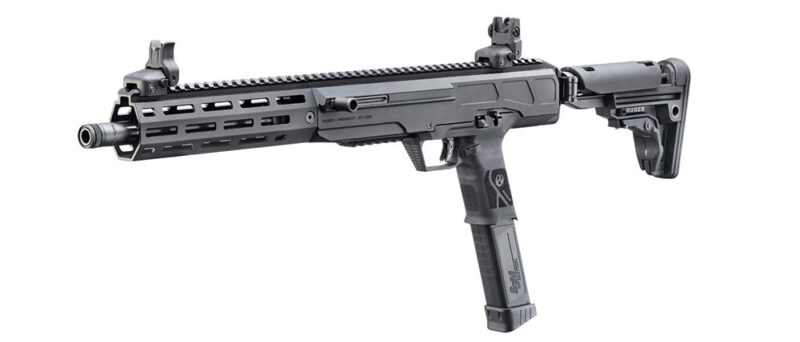
The Ruger LC can be found chambered in 10mm, .45 ACP and 5.7×28. This semi auto comes with Ruger’s Rapid Deploy sights, adjustable stock and two Picatinny rails. One is for optics and one for accessories. Its threaded barrel accepts suppressors and brakes, and it used standard GLOCK magazines. This is another gun that crosses boundaries outside the home, especially for those wanting a longer gun in the same caliber as a pistol.
By Paul Rackley, GunBroker Editor

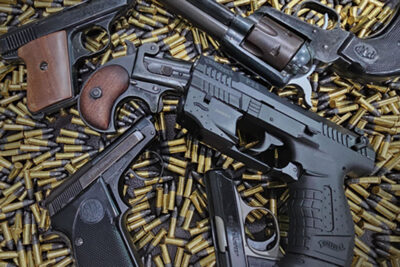
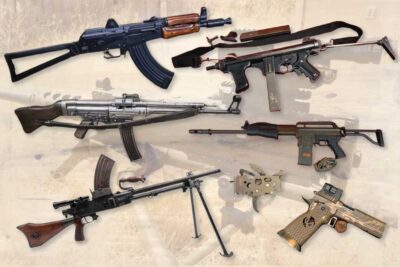

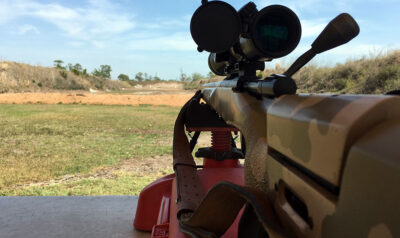
![SIG SAUER CROSS SAWTOOTH Rifle – Now Chambered in 6.5 PRC [Video]](https://qacontent.gunbroker.com/wp-content/uploads/2025/08/Sig-Sauer-Cross-SAWTOOTH-6.5-PRC-Rifle-22-Proof-Carbon-Fiber-Barrel-Featured_1200x800-400x267.jpg)

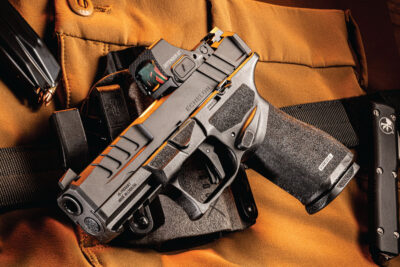
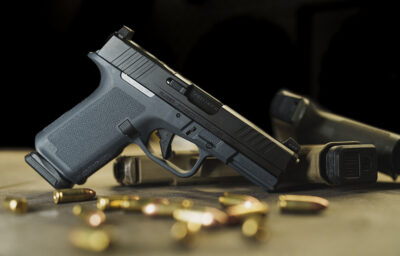

![6 Awesome Guns from Industry Day at the Range Plus 7mm Backcountry Ammo [Video]](https://qacontent.gunbroker.com/wp-content/uploads/2025/01/Industry-Day-at-The-Range-SHOT-2025-400x267.jpg)
![SHOT Show 2025 Day 2 with GunBroker [Video]](https://qacontent.gunbroker.com/wp-content/uploads/2025/01/SHOT-Show-2025-Day-2-Featured-400x267.png)